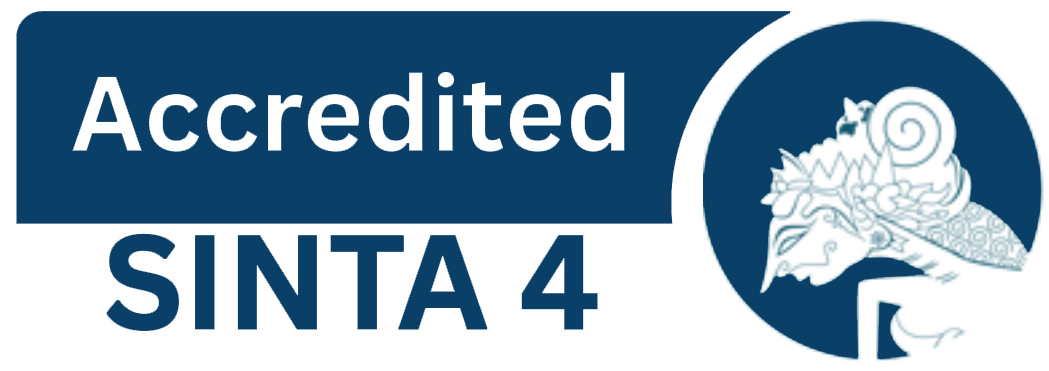KEMAMPUAN LITERASI NUMERASI SISWA SD INKLUSIF DALAM MEMECAHKAN SOAL CERITA
DOI:
https://doi.org/10.22460/collase.v4i6.9101Keywords:
numeracy literacy, inclusive students, story questionsAbstract
This study aims to describe the numeracy literacy ability of inclusive students in solving story problems. This type of research is descriptive qualitative research. The subjects of this study were inclusive students at Madrasah Ibtidaiyah Darul Hikmah who were in high class as many as 2 students. Data collection techniques used in this research are technical tests and non-tests. The test technique uses an instrument of description questions to see the numeracy literacy abilities of inclusive students in the form of story questions about simple arithmetic operations. Then the non-test technique used interviews with inclusive teachers and students who were used as research subjects. The data analysis technique uses triangulation techniques, namely the stages of data reduction, data presentation, and conclusion drawing. The results of this study indicate that the numeracy literacy ability of inclusive students is still said to be below. Subject A's responses to the questions are 1) subject A can use contextual understanding to solve mathematical problems but is still not correct in solving them; 2) unable to write the conclusion of the settlement, and 3) subject A has not been able to relate various representations when solving problems. Meanwhile, subject B's response to the question is: 1) can write the process in reaching a solution, but it is not complete and not correct; 2) have also been able to write the conclusions of mathematical results based on the results obtained based on the written completion process but the answers given are not correct, and 3) have been able to use contextual understanding to solve mathematical problems but it is not correct.
References
Amirah, S., Mahmud, N., & Aprisal, A. (2021). Pengaruh Kemampuan Koneksi Matematis dan Kebiasaan Belajar terhadap Hasil Belajar Matematika Siswa Kelas IX. J-HEST: Journal of Healt, Education, Economics, Science, and Technology, 3(2), 100–113.
Aprisal, A, & Abadi, A. (2018). Mathematical Communication Ability of Students Viewed from Self-Efficacy. International Coference on Mathematics and Science Education, 3, 726–732.
Aprisal, Aprisal, & Arifin, S. (2020). Kemampuan Penalaran Matematika Dan Self-Efficacy Siswa Smp. Delta: Jurnal Ilmiah Pendidikan Matematika, 8(1), 33. https://doi.org/10.31941/delta.v8i1.945
Creswell, J. W. (2012). Research Design: Pendekatan Kuantitatif, Kualitatif, dan Mixed (Edisi Ketiga).
Dantes, N., & Handayani, N. N. L. (2021). Peningkatan Literasi Sekolah dan Literasi Numerasi Melalui Model Blanded Learning pada Siswa Kelas V SD Kota Singaraja. Widyalaya: Jurnal Ilmu Pendidikan, 1(3), 269–283.
Fauzi, A., Anar, A. P., Rahmatih, A. N., Wardani, K. S. K., & Warthini, N. L. P. N. S. (2020). Persepsi Guru Terhadap Siswa Berkesulitan Fungsional di SD Negeri Gunung Gatep Kabupaten Lombok Tengah. Progres Pendidikan, 1(2), 72–79.
Fauzi, A., Radiusman, Rahmatih, A. N., & Restini, N. K. (2020). Analisis kemampuan komunikasi matematis siswa SD kelas V dalam menyelesaikan soal pecahan. JUMLAHKU: Jurnal Matematika Ilmiah, 6(1), 37–49.
Fiad, U., Suharto, & Kurniati, D. (2017). Identifikasi Kemampuan Literasi Matematika Siswa SMP Negeri 12 Jember Dalam Menyelesaikan Soal Pisa Konten Space and Shape. Jurnal Kadikma, 8(1), 72–78.
Kemendikbud. (2017). Materi Pendukung Literasi Numerasi. Kementrian Pendidikan Dan Kebudayaan, 8(9), 1–58.
Maghfiroh, F. L., Amin, S. M., Ibrahim, M., & Hartatik, S. (2021). Keefektifan Pendekatan Pendidikan Matematika Realistik Indonesia terhadap Kemampuan Literasi Numerasi Siswa di Sekolah Dasar. Jurnal Basicedu, 5(4), 3342–3351.
Pangesti, F. T. P. (2018). Menumbuhkembangkan Literasi Numerasi Pada Pembelajaran Matematika Dengan Soal Hots. Indonesian Digital Journal of Mathematics and Education, 5(9), 566–575.
Perdana, R., & Suswandari, M. (2021). Literasi Numerasi Dalam Pembelajaran Tematik Siswa Kelas Atas Sekolah Dasar. Absis: Mathematics Education Journal, 3(1), 9. https://doi.org/10.32585/absis.v3i1.1385
Pramitasari, K., Usodo, B., Subanti, S., Magister, P., Matematika, P., Sebelas, U., & Surakarta, M. (2019). Proses Pembelajaran Matematika Untuk Siswa Slow Learner Di Kelas Inklusi Smp Negeri 7 Klaten Kelas Viii. Jurnal Elektronik Pendidikan Matematika, 3(7), 777–786.
Purwasih, R., Sari, N. R., & Agustina, S. (2018). Analisis Kemampuan Literasi Matematika Dan Mathematical Habits Of Mind Siswa SMP Pada Materi Bangun Ruang Sisi Datar. Jurnal Numeracy, 5(1), 67–76.
Siskawati1, F. S., Chandra2, F. E., & Tri Novita Irawati3. (2020). Profil Kemampuan Literasi Numerasi Di Masa Pandemi Cov-19. Pedagogy : Jurnal Pendidikan Matematika, 1(101), 258.
Utami, N. E. B. (2019). Layanan Guru Kelas Bagi Siswa Slow Learner Di Sekolah Inklusi (SD N Bangunrejo 2 Yogyakarta). Al-Bidayah: Jurnal Pendidikan Dasar Islam, 10(2), 271–290. https://doi.org/10.14421/al-bidayah.v10i2.164



